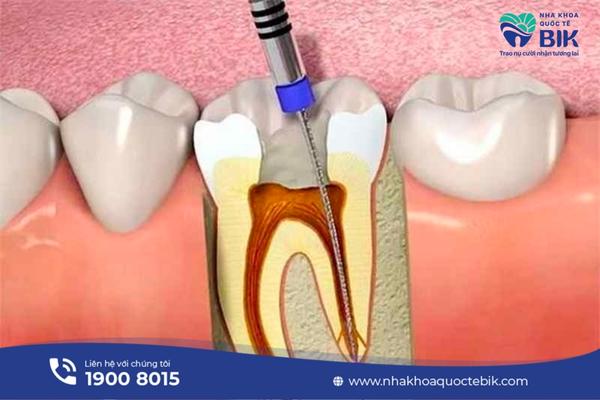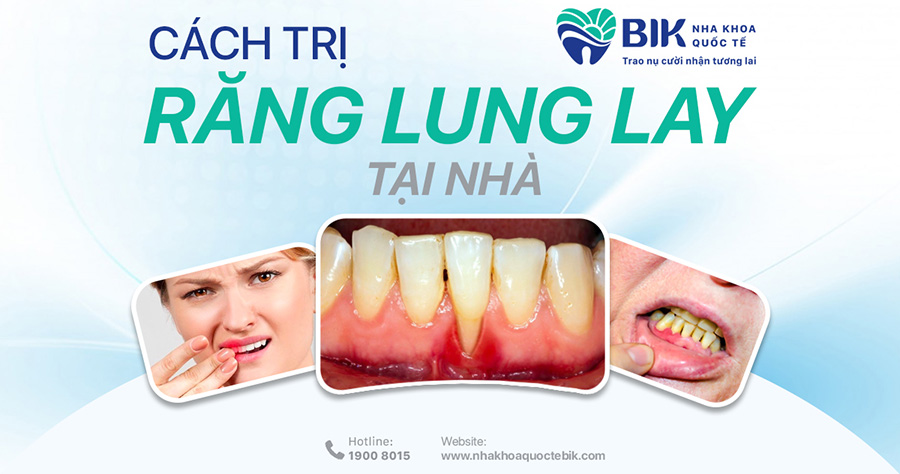When a tooth is cracked due to external force or severe tooth decay, it will create an opportunity for bacteria to penetrate the inner pulp and cause inflammation, causing pulpitis. So is root canal treatment painful? Let’s find out the answer with BIK International Dental Clinic in the article below!
1. What is root canal treatment?
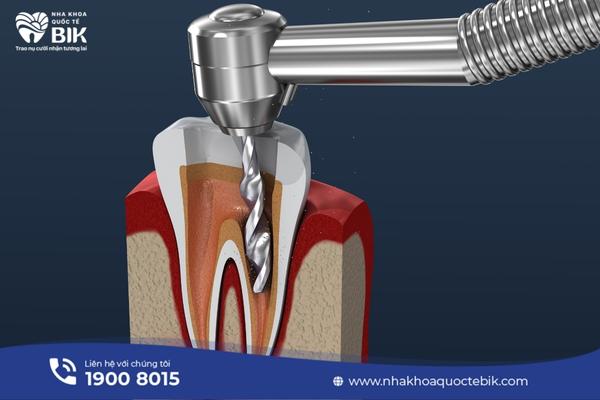
Before finding out if root canal treatment is painful? Let’s find out what root canal treatment is!
The dental pulp is a connective tissue consisting of many small blood vessels and nerves located between the teeth. Because it is protected by the crown and root of the tooth, this is an area that is very difficult to damage. Once bacteria penetrate this area, it will cause pulpitis.
Root canal treatment is the leading measure for cases of pulpitis. Root canal treatment aims to completely remove the infected pulp inside the pulp cavity. From there, the infection is completely resolved and the pain will stop quickly.
2. When is root canal treatment needed?
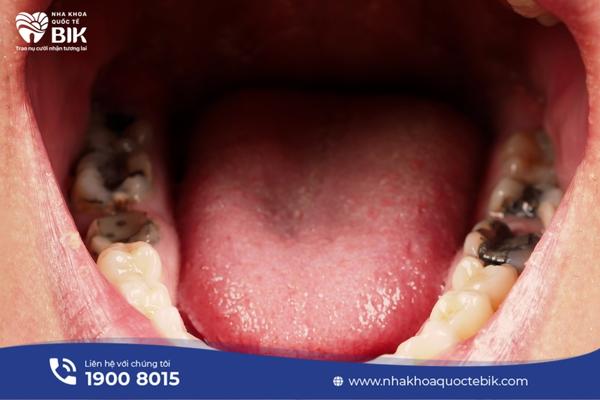
It is necessary to rely on some signs to recognize pulpitis:
2.1. Signs
– Teeth sensitivity
When exposed to cold foods and even sweets or hot foods, there will be tooth sensitivity. If the pulpitis is severe, not only will there be pain but also aching.
– Stinging pain
When the pulpitis occurs, the tooth will feel a sharp pain, usually lasting about 5 – 10 minutes and more painful at night. If the pulpitis is severe, the pain can last for several hours.
2.2. So when is it necessary to treat the pulp?
Once you discover that you have pulpitis or that your tooth is unusually discolored or has a large cavity, you should see a doctor for root canal treatment as soon as possible. If left untreated, the infection will become more severe and spread, causing the tooth bone to degenerate. This will lead to lymphadenitis, facial swelling, periapical inflammation, periapical abscess and many other oral diseases.
3. Is the root canal treatment procedure painful?

The root canal treatment procedure at BIK International Dental Clinic is completely painless and does not cause any discomfort, including the following basic steps:
3.1. Check the condition of the pulp
The doctor will take a dental X-ray to determine the location and check the level of pulpitis to plan the treatment.
3.2. Local anesthesia
Before anesthesia, the doctor will clean the tartar and bacteria to ensure the oral cavity is clean, avoiding infection. Local anesthesia in the area of the tooth being treated will help the patient not feel pain during the root canal procedure.
3.3. Placing a rubber base
The rubber base is placed to separate the treatment area from the surrounding area, preventing the penetration of saliva to ensure that the tooth area being prepared for the procedure is always dry and clean, limiting the risk of infection.
3.4. Proceed to root canal treatment
The doctor will drill a small hole to open the pulp and determine the length of the root canal. After that, the infected or necrotic pulp tissue will be sucked out of the root canal with a specialized tool. The root canal treatment will be completed when there is no more inflammation or remaining tissue in the tooth.
3.5. Sealing
The doctor will seal the created hole with a specialized plastic to prevent infection caused by bacteria in the oral cavity. This type of plastic has the same hardness as real teeth, so it will not affect the chewing process.
3.6. Schedule a follow-up appointment
Re-examine as directed by the doctor to check the stability of the tooth and promptly fix any unexpected problems.
4. Does root canal treatment hurt?
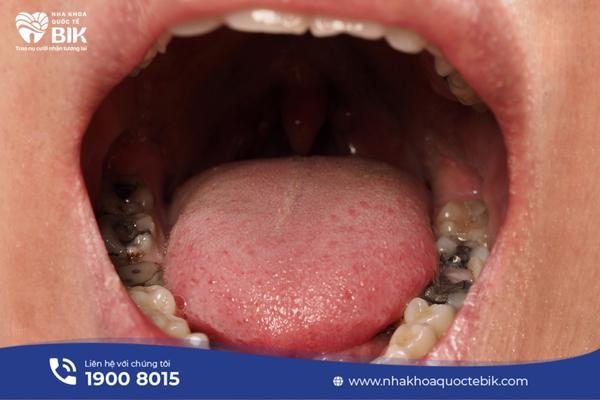
Is root canal treatment painful?
4.1. During treatment
If the doctor is skilled enough and combined with modern dental technology today, root canal treatment is very gentle, quick, and completely painless or uncomfortable.
4.2. After treatment
Within 1-2 hours after root canal treatment, you may feel tooth sensitivity as the anesthetic gradually wears off. At this time, the dental filling material has not yet adapted to the oral environment, so there will be a slight discomfort. During this time, if necessary, the doctor will prescribe pain relievers to make the patient more comfortable.
If the tooth has had a root canal but still has pain or pus after a few days, the doctor may not have removed the root canal completely or there was an error in the treatment process that affected the soft tissue.
5. How long does it take to treat a root canal?
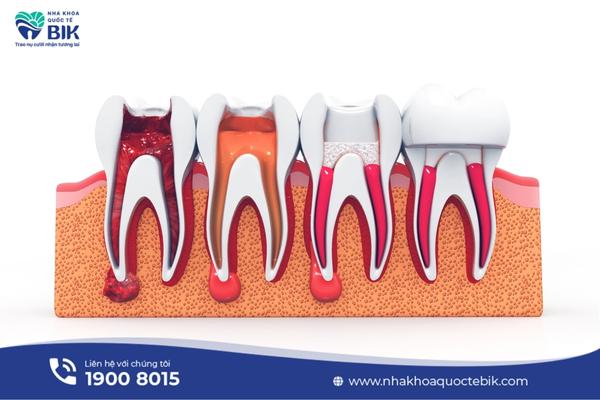
The root canal treatment time basically takes about 15-30 minutes and also depends on the following factors:
5.1. Number of root canals
If the tooth has many root canals, it will definitely take more time to remove all the pulp. There are even cases where it has to be divided into multiple treatments.
5.2. Oral health status
If you have other oral diseases such as gingivitis, apical tooth infection, etc., it will take more time to completely treat.
5.3. Doctor’s skills
The doctor’s qualifications and experience are the leading factors determining the effectiveness of the treatment. If the doctor is highly skilled combined with modern dental technology today, the treatment time will be significantly shortened and many risks will be limited.
6. What should and should not be eaten after root canal treatment?

A suitable diet is needed after root canal treatment:
6.1. What should you eat after root canal treatment?
After treating root canal inflammation, you should only eat soft, liquid foods such as porridge, soup, milk, etc. to avoid putting too much pressure on the teeth when chewing and protect the teeth that have just been treated from being damaged. At the same time, it is necessary to supplement vitamins and fiber found in fruits and vegetables to increase the body’s resistance.
6.2. What should not be eaten after a root canal?
After a root canal, you should not eat hard, chewy foods that require force when chewing, such as chewing gum or ice, because they can chip teeth. In addition, you should limit foods that contain a lot of sugar and starch because they will create conditions for bacteria to grow and develop.
Thus, root canal treatment is a mandatory measure for severe root canal infections that cannot be effectively treated with medication. Root canal treatment is quite simple and will help you overcome the pain and discomfort during root canal infections quickly and safely.

